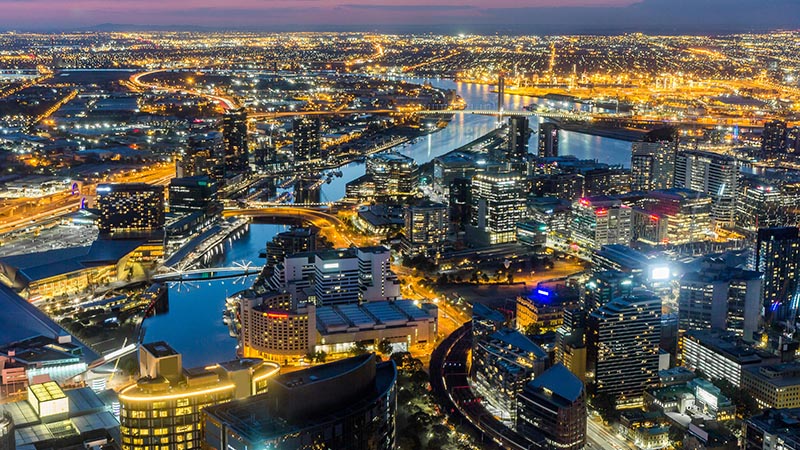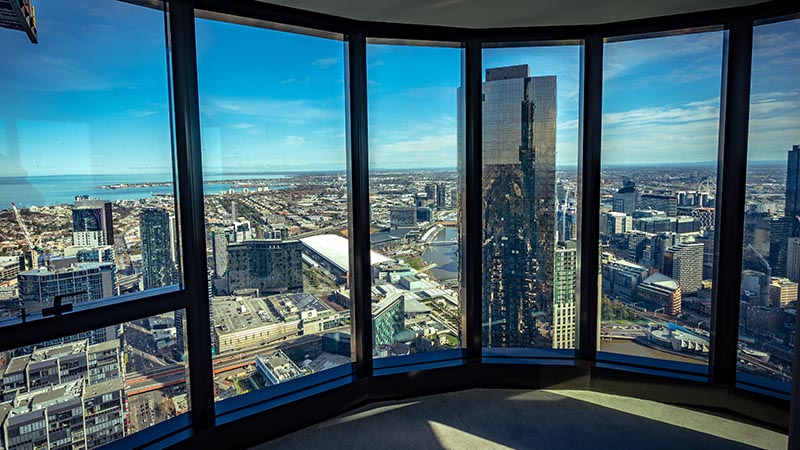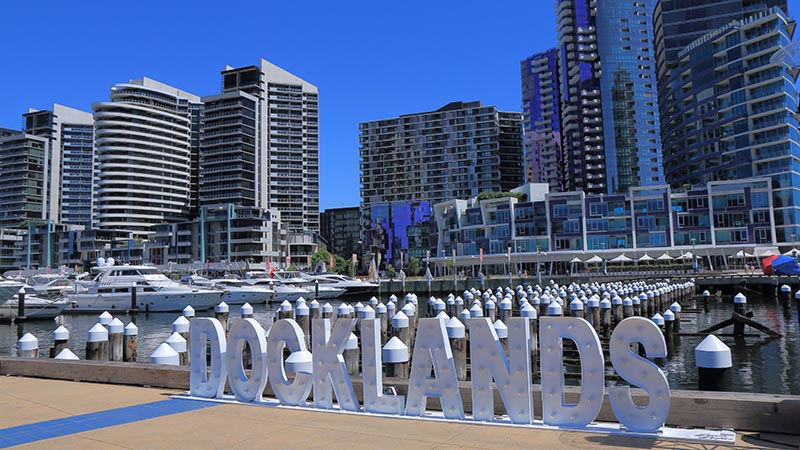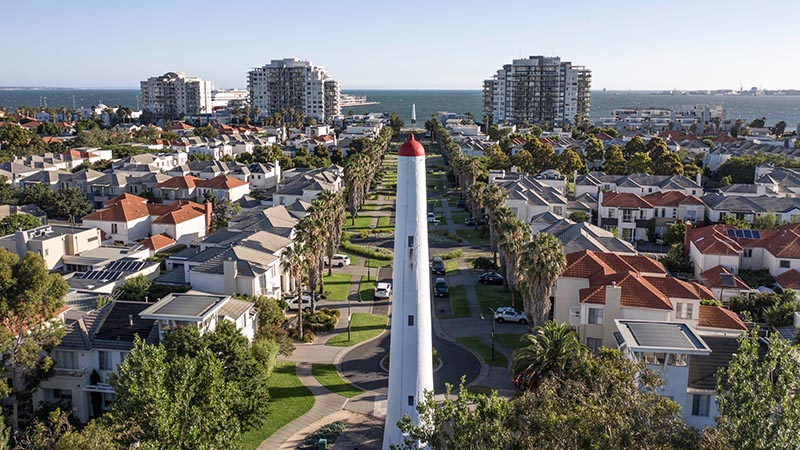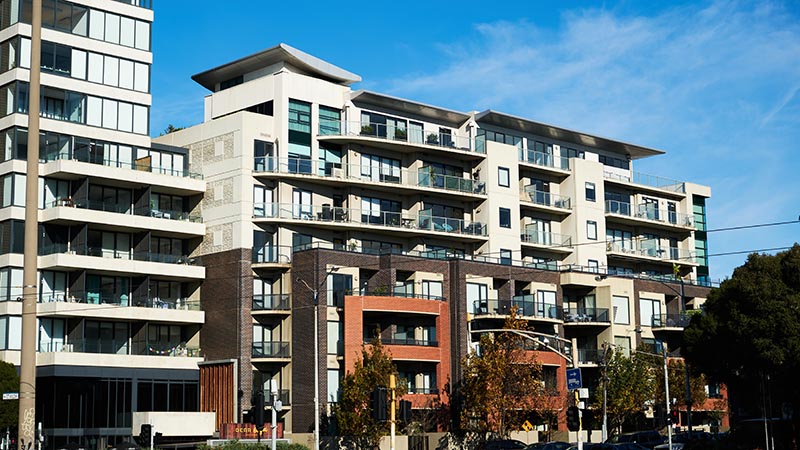Enigmatic inner city Melbourne unit market defies national trends
The Melbourne unit market seemingly operates independently of national trends but rents are rising rapidly and investors are cautiously eyeing the potential of what was an oversupplied apartment market.
The oversupplied Melbourne unit market is seemingly the immovable rock in the turbulent seas of the Australian property market.
When prices soared around the country, the inner city and surrounding unit market in Melbourne remained stubbornly unmoved.
As the waves now start to crash over national property prices, this market appears likely to weather the storm as well as anywhere.
Driven by rising rental yields and a shift in pricing trends towards units outperforming houses, the Melbourne apartment market remains an enigma within the wider market.
Investors are making a tentative return to the area but local realtors are reluctant to predict which way this outlier of a market will go.
There is diversity within an area that encompasses the CBD, Jolimont, Docklands (including NewQuay), Southbank, South Melbourne, Port Melbourne, North Melbourne, Carlton, and east to East Melbourne, Richmond, Cremorne, South Yarra and Prahran.
Director of Inner Real Estate, Anthony Cimino, told API Magazine there are still pockets of front-facing opportunity for investors, like inner city Melbourne apartments where rental yields have almost doubled in the first half of 2022.
“We always knew the rental recovery was going to be good in Melbourne but no-one anticipated it to be this quick and this sharp,” he said.
“If you signed a lease in January, you’re signing pre-covid rent - if you’re signing a lease in February you’re signing it for 40 per cent more, so we’re pretty much back to pre-pandemic rental prices in the space of a couple of months.”
He cited the example of a recently sold $300,000 two-bed, one-bath, 50sqm apartment on Lonsdale Street in the CBD.
“Rent was $250 a week, you’d now be getting $480 a week, so there’s a 20 per cent gain that you could make in the purchase price potentially.
“Investors have sort of fled but now there’s some good opportunities to pick up along the way.
“We signed contracts recently on a place on Swanton Street (in the CBD) for a two-bed for $210,000 for 48sqm, so that’s good buying, that’ll rent out mid- to high $400s per week,” Mr Cimino said.
International parallels
Fleeing investors have left gaps in the market but Pavilion Property real estate agent Grant Henschke is adamant there’s historical evidence Melbourne’s rental market can pay dividends.
“Generally, when you’re dealing with investors, when there’s bad news on interest rates, it’s usually good news for rents.
“If they’re not buying, they’re renting, generally speaking.
“The only place when that’s different is a hot market, like in London back in the day when you might see 7 per cent rental yield and property prices treble in 10 years but that’s because you had a large influx in people.
“You saw the same thing in Dubai, but you also see the worst-case scenario which is what everyone thinks is going to happen, and that is, the property prices are going to go down, and rents are going to go down, and the only way that’s going to happen is if everyone leaves.
“When the Global Financial Crisis hit Dubai and property prices fell, the workforce largely employed on short-term contracts also left and rents fell too.
“In Melbourne, a lot of people will find themselves stuck renting but they're not leaving.
“If you’re talking more entry-level housing, first- and second-time buyer opportunities it’s harder to borrow the money.
“A lot of these people go, ‘I’ll wait for prices to cool off then I’ll buy’, then interest rates go up and banks pull the mortgage products then those buyers can’t get into the market even though they’re waiting for the price to cool, and finance goes against them so they’re stuck renting.
“I’m sure that rents will pick up because there’s less people buying.”
No crystal ball
According to SQM Research, capital city asking house prices fell 2.3 per cent over the month to 1 July, while unit prices rose 0.6 per cent.
“There are good investment opportunities out there for people who have equity they’ve built up in their principal place of residence, because rents have come back,” said Mr Cimino, whose agency predominantly works in Southbank, Docklands, St Kilda Road and around Melbourne CBD.
He hesitates, however, to forecast what’s ahead.
“I’ve given up looking into the crystal ball.
“I look into the past and the one thing that has always been apparent, and this story I say to a lot of my owners; I had a client 12 years ago, was a lady who wanted to sell property on Flinders Street, and she’d say what’s it worth, and it was $290,000 to $310,000.
“We sold it last year for $305,000 and every year we’d talk and it was $290,000-$310,000, it was always the same.
“There were some years it might gone down to $275,000-$290,000 and some when it went to $310,000-$330,000, but pretty much over the 11-year period, it stayed relatively the same.
“That’s our market, because you’ve got new buildings being built so the supply’s always there whenever there’s a bit more of a demand, it’s squashed with more supply,” he said.
“It’s a bugbear of mine.”
Foreign buyer constraints
Much has been made of international students returning to Melbourne and overseas migration opening up.
But it may not be the silver bullet for inner city Melbourne property.
“My belief is why sell land when you can sell airspace off overseas and open it up, but our market is limited to selling to permanent residents, citizens,” Mr Cimino said.
“We can’t sell our established properties overseas unless there’s FIRB (Foreign Investment Review Board) approval.”
Mr Cimino says most apartment listings are investors who have held properties for a number of years who want to sell out of the market, while on the other hand the majority of buyers are owner-occupiers.
We never saw apartments go up say 20 per cent; pre-covid is pretty much what they’re selling for now.
- Anthony Cimino, Director, Inner Real Estate
“There’s been a real big shift to the owner-occupier market, mainly first-home buyers seeing value in the one and two-bedroom market.
“You can still buy a one-bedroom apartment without a car park, in the sort of low $300,000s, and with a car park, in mid to high $300,000s, and then a two-bedroom can raise you to $400,000 to $600,000 depending on size, car parking etcetera, so it still amounts to good value.”
The types of properties being sold has also changed. University lodges and investment grade apartments are harder to move compared to owner-occupied apartments.
Typical of inner Melbourne, there continues to be an oversupply, with more listings hitting the market than buyers.
“Demand has always stayed about the same.
“I do a weekly email that I send out to clients that I’ve done appraisals for, they’re those people that are going to list in the next 30-90 days, so I can send them a list of every apartment that gets listed in the last seven days and sold in the last seven days.
“Last week when I sent it out, there were 26 apartments in Melbourne’s 3000 post code and nine sales.
“At the start of the year it was probably 15 or 16 apartments listed, and probably 13 or 14 sales being made, so pretty much everything being listed was being cleared.
“It was close to one for one and now it’s one in two, so the market has contracted again in terms of people that are looking at buying, and also there’s been a bit of an influx in people wanting to sell because of interest rate pressures, and that sort of thing have filtered through.”
Mr Cimino said his was a bit of an abnormal market.
“We never saw a boom, we never saw apartments go up say 20 per cent; pre-covid is pretty much what they’re selling for now.”


